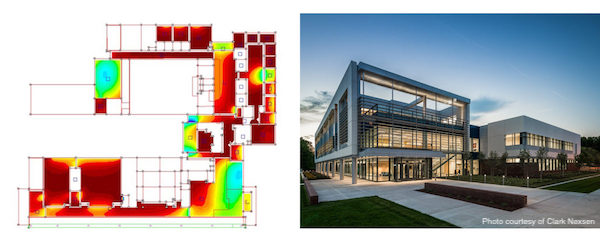
Sometimes energy modelers and mechanical engineers use different values for details like lighting power density or receptacle loads. How can we maintain better compatibility between models, or do we need to?
-Looking for Consistency
Dear Consistency,
We have been down this path before, especially if you have an involved mechanical or electrical engineer. It is way into a construction document or permit set development cycle, and everyone is anxious to get the documents out the door and know what the energy model is predicting for design EUI or LEED points. That glorious moment when you receive the email from the engineer, who after having examined the energy end use breakdown notices the plug load consumption is far off from their estimates. “Can we set up a GoTo meeting to discuss?” is what usually follows.
To start, is the model that the energy modeller produces going to inform anything in the mechanical design? Always ask yourself what the purpose of the model is – be it code compliance, LEED documentation or informing design decisions, among others.
Is the modeller simply producing a code compliance report that the authority having jurisdiction (AHJ) is going to see, check the box, and never speak about it again? If that is the case, the simple truth is that it does not matter if those values for lighting power density or receptacle loads align. That is not to say that the model produced for code compliance does not have to align with the installed lighting or equipment design – we know those two things must align. But we also know nine times out of ten the mechanical engineer is not doing space by space lighting power density calculations to inform their load calculations. They know an office building is around 1 W/sqft and if it is a lab, then perhaps the LPD is around 1.6 W/sqft. And the best part is, they are right in doing so.
Build a quick 50,000 square foot office building in your favorite piece of energy modeling software and assign a LPD of 1.0 W/sqft to the building. Then, create an alternate and assign a LPD of 1.6 W/sqft. Check out the results. Did your building peak cooling load or airflow really change to any significant degree? Not substantially; what did change was your annual energy use.
Herein lies the primary difference between the mechanical engineer and the energy modeller that needs to be established. The mechanical engineer is looking at a point in time for peak sizing, the modeller is looking at the full year. The energy modeller cares to be detailed in their lighting or equipment power densities because a 0.6 W/sqft difference (referencing the above 1.0 and 1.6 W/sqft) multiplied over 8,760 hours in a year makes a big difference – at a specific moment in time however, 0.6 W/sqft is minimal.
Would it be nice for those values to align between energy modeller and engineer? Certainly – I appreciate consistency as much as the next person. A great way to maintain compatibility is to simply ask for the mechanical engineer’s load calculation file, view the inputs, and then have a dialogue. Or reference the mechanical engineer’s basis of design which will elaborate on the design assumptions they have used. Additionally, in the case where the model is used for stringent program compliance, consider identifying end uses that contribute significantly to annual/peak loads for that building/space type, then consult with MEP at early stages of the project to ensure assumptions are appropriate for those specific items. Lastly, ASHRAE research paper 1742 provides updated office plug load values, more accurate than those found in the Fundamentals textbook, and make sure to subscribe to updates from NREL’s multi-year effort to develop a database of end-use profiles for current U.S. building stock across climates and building types, set to be complete in 2021.
In a day and age when design is moving faster than ever, always ask yourself what is the purpose of the model you are building, and what impact it will have. By asking these questions, it will dictate the level of detail you need to spend on each element of the model. If the mechanical load file, and your energy model are going to be independent of each other, then do your due diligence to compare LPD and receptacle load values, but otherwise work to improve the level of detail in other areas of the model – like HVAC fan control or daylighting.
Conor Rielly
Building Energy Analyst, CannonDesign
crielly@cannondesign.com
Do you have anything to add or your own answer to contribute? Please share your thoughts by emailing askamodeler@ibpsa.us; you are an expert too! Do you have your own question for the expert? Submit your question to be considered for a future column. Note that questions requiring an immediate response should be submitted to the community of experts at unmethours.com. If you are interested in replying to a question as a featured expert or have any other feedback about Ask a Modeler please email askamodeler@ibpsa.us.


